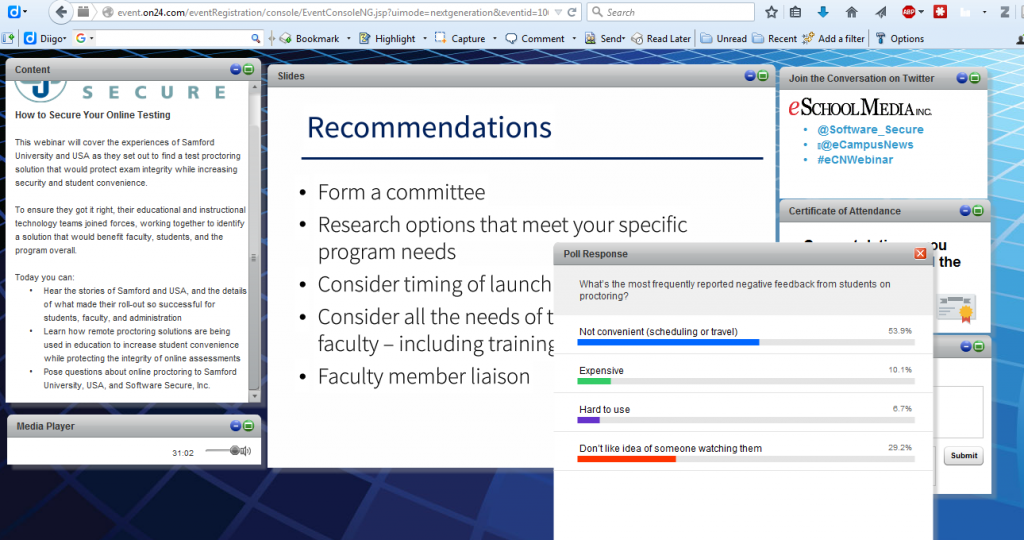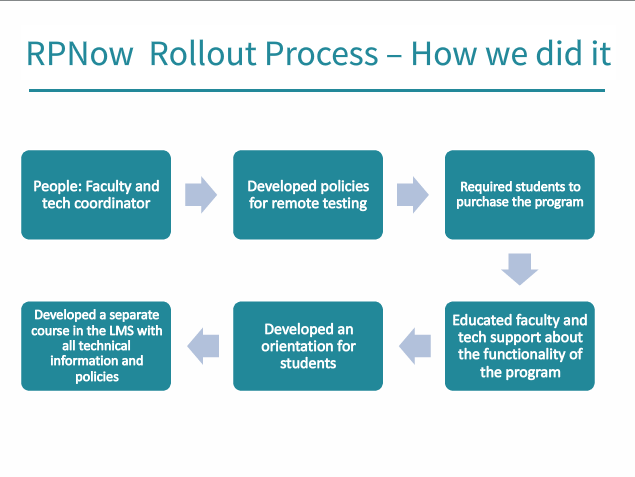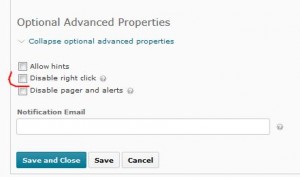Posts Tagged ‘proctoring’
Message to SDSU students regarding RESPONDUS software. #1 We will not rely solely on faculty interpretation of video evidence from Respondus when evaluating claims of academic dishonesty. #2 – Beginning in Jan 2021, IT will not support the campuswide use of Respondus by faculty. pic.twitter.com/I2Ssim4LVW
— Dr. Luke Wood (@DrLukeWood) December 8, 2020
++++++++++++++
more on proctoring in this IMS blog
https://blog.stcloudstate.edu/ims?s=proctorio
more on proctoring in the Higher Ed Learning Collective
https://www.facebook.com/groups/539260760037960/search/?q=proctor
https://www.facebook.com/groups/RemakingtheUniversity/permalink/1454440301415995/
proctoring software and surveillance in the COVID-19 era.
https://www.insidehighered.com/blogs/just-visiting/teach-against-surveillance
+++++++++++
more on proctoring in this IMS blog
https://blog.stcloudstate.edu/ims?s=proctor
Show up as a celebrity to your next Zoom meeting with this deepfake tool — A researcher shows how you can become anyone, from Elon Musk to Eminem, during video chats. from r/technology
Show up as a celebrity to your next Zoom meeting with this deepfake tool
++++++++++++++
more on deep fake in this IMS blog
https://blog.stcloudstate.edu/ims?s=deep+fake
Our Bodies Encoded: Algorithmic Test Proctoring in Higher Education
https://hybridpedagogy.org/our-bodies-encoded-algorithmic-test-proctoring-in-higher-education/
While in-person test proctoring has been used to combat test-based cheating, this can be difficult to translate to online courses. Ed-tech companies have sought to address this concern by offering to watch students take online tests, in real time, through their webcams.
Some of the more prominent companies offering these services include Proctorio, Respondus, ProctorU, HonorLock, Kryterion Global Testing Solutions, and Examity.
Algorithmic test proctoring’s settings have discriminatory consequences across multiple identities and serious privacy implications.
While racist technology calibrated for white skin isn’t new (everything from photography to soap dispensers do this), we see it deployed through face detection and facial recognition used by algorithmic proctoring systems.
While some test proctoring companies develop their own facial recognition software, most purchase software developed by other companies, but these technologies generally function similarly and have shown a consistent inability to identify people with darker skin or even tell the difference between Chinese people. Facial recognition literally encodes the invisibility of Black people and the racist stereotype that all Asian people look the same.
As Os Keyes has demonstrated, facial recognition has a terrible history with gender. This means that a software asking students to verify their identity is compromising for students who identify as trans, non-binary, or express their gender in ways counter to cis/heteronormativity.
These features and settings create a system of asymmetric surveillance and lack of accountability, things which have always created a risk for abuse and sexual harassment. Technologies like these have a long history of being abused, largely by heterosexual men at the expense of women’s bodies, privacy, and dignity.
Their promotional messaging functions similarly to dog whistle politics which is commonly used in anti-immigration rhetoric. It’s also not a coincidence that these technologies are being used to exclude people not wanted by an institution; biometrics and facial recognition have been connected to anti-immigration policies, supported by both Republican and Democratic administrations, going back to the 1990’s.
Borrowing from Henry A. Giroux, Kevin Seeber describes the pedagogy of punishment and some of its consequences in regards to higher education’s approach to plagiarism in his book chapter “The Failed Pedagogy of Punishment: Moving Discussions of Plagiarism beyond Detection and Discipline.”
my note: I am repeating this for years
Sean Michael Morris and Jesse Stommel’s ongoing critique of Turnitin, a plagiarism detection software, outlines exactly how this logic operates in ed-tech and higher education: 1) don’t trust students, 2) surveil them, 3) ignore the complexity of writing and citation, and 4) monetize the data.
Technological Solutionism
Cheating is not a technological problem, but a social and pedagogical problem.
Our habit of believing that technology will solve pedagogical problems is endemic to narratives produced by the ed-tech community and, as Audrey Watters writes, is tied to the Silicon Valley culture that often funds it. Scholars have been dismantling the narrative of technological solutionism and neutrality for some time now. In her book “Algorithms of Oppression,” Safiya Umoja Noble demonstrates how the algorithms that are responsible for Google Search amplify and “reinforce oppressive social relationships and enact new modes of racial profiling.”
Anna Lauren Hoffmann, who coined the term “data violence” to describe the impact harmful technological systems have on people and how these systems retain the appearance of objectivity despite the disproportionate harm they inflict on marginalized communities.
This system of measuring bodies and behaviors, associating certain bodies and behaviors with desirability and others with inferiority, engages in what Lennard J. Davis calls the Eugenic Gaze.
Higher education is deeply complicit in the eugenics movement. Nazism borrowed many of its ideas about racial purity from the American school of eugenics, and universities were instrumental in supporting eugenics research by publishing copious literature on it, establishing endowed professorships, institutes, and scholarly societies that spearheaded eugenic research and propaganda.
+++++++++++++++++
more on privacy in this IMS blog
https://blog.stcloudstate.edu/ims?s=privacy
https://www.edsurge.com/news/2017-04-19-online-courses-shouldn-t-use-remote-proctoring-tools-here-s-why
when the option between taking a course online or in-person is provided, studies show students are more likely to stay in college.
Since the early days of online instruction, the response of many new instructors has been to figure out how to transfer elements of their face-to-face class into the online format. In response, education technology companies have been quick to create products that attempt to replicate in-person teaching. Some examples include learning management systems, lecture capture tools, and early online meeting systems.
online proctoring systems, such as ProctorU or Proctorio, replicate a practice that isn’t effective in-person. Exams are only good for a few things: managing faculty workload and assessing low level skill and content knowledge. What they aren’t good at is demonstrating student learning or mastery of a topic. As authors Rena Palloff and Keith Pratt discuss in their book “Assessing the Online Learner: Resources and Strategies for Faculty,” online exams typically measure skills that require memorization of facts, whereas learning objectives are often written around one’s ability to create, evaluate and analyze course material.
Authentic assessments, rather than multiple choice or other online exams, is one alternative that could be explored. For example, in a chemistry course, students could make a video themselves doing a set problems and explain the process. This would allow instructors to better understand students’ thinking and identify areas that they are struggling in. Another example could be in a psychology course, where students could curate and evaluate a set of resources on a given topic to demonstrate their ability to find, and critically analyze online information. (see Bryan Alexander‘s take on video assignments here: https://blog.stcloudstate.edu/ims?s=bryan+alexander+video+assignments
+++++++++++
more on online learning in this IMS blog
https://blog.stcloudstate.edu/ims?s=online+learning
more on proctoring in this IMS blog
https://blog.stcloudstate.edu/ims?s=proctor
According to the latest report from Babson Survey Research Group, nearly 6.5 million American undergraduates now take at least one course online
1. Listen to students and faculty. Every college, university, or online-learning provider has a different approach to online learning. At Indiana University, where more than 30 percent of students take at least one online course, the online education team has launched Next.IU, an innovative pilot program to solicit feedback from the campus community before making any major edtech decision. By soliciting direct feedback from students and faculty, institutions can avoid technical difficulties and secure support before rolling out the technology campus-wide.
2. Go mobile. Nine in 10 undergraduates own a smartphone, and the majority of online students complete some coursework on a mobile device. Tapping into the near-ubiquity of mobile computing on campus can help streamline the proctoring and verification process. Rather than having to log onto a desktop, students can use features like fingerprint scan and facial recognition that are already integrated into most smartphones to verify their identity directly from their mobile device.
For a growing number of students, mobile technology is the most accessible way to engage in online coursework, so mobile verification provides not only a set of advanced security tools, but also a way for universities to meet students where they are.
3. Learn from the data. Analytical approaches to online test security are still in the early stages. Schools may be more susceptible to online “heists” if they are of a certain size or administer exams in a certain way, but institutions need data to benchmark against their peers and identify pain points in their approach to proctoring.
In an initial pilot with 325,000 students, for instance, we found that cheating rose and fell with the seasons—falling from 6.62 percent to 5.49 percent from fall to spring, but rising to a new high of 6.65 percent during the summer.
++++++++++++
more on proctoring in this IMS blog
https://blog.stcloudstate.edu/ims?s=proctoring
Nobody’s Watching: Proctoring in Online Learning
There is no single best way to handle proctoring for digital courses, as this community college system pilot discovered.
By Dian Schaffhauser 07/26/17
https://campustechnology.com/articles/2017/07/26/nobodys-watching-proctoring-in-online-learning.aspx
The Higher Education Opportunity Act of 2008 lays out the rule: An institution offering “distance education” needs to have processes in place for verifying student identity to ensure that the student who registers for a class is the “same student who participates in and completes the program and receives the academic credit.”
OLC (Online Learning Consortium) Innovate conference and shared the solution: a combination of the use of an automated proctoring application and the creation of a network of colleges across the state that would provide no-cost proctoring on their campuses for students attending any of the member schools.
put together an online proctoring working group with “lots of faculty representation,” said Hadsell, which “paid off in the long run.” Other participants included people from testing centers and learning centers. Proctorio, the proctoring solution eventually recommended by the working group, is a web service that can be deployed through Canvas and installed by students with one click
++++++++++++++
more on proctoring in this IMS blog
https://blog.stcloudstate.edu/ims?s=proctor
How to Enable the Right Click on Websites That Disable It
, it seems that it is feeble option for proctoring, if the Web shares plenty of information how to circumvent right-click
+++++++++
more on proctoring in this IMS blog:
https://blog.stcloudstate.edu/ims?s=proctor
How to Secure Your Online Testing
November 4th, 2015 | 02:00 PM EDT | 11:00 AM PDT
https://event.on24.com/eventRegistration/EventLobbyServlet?target=lobby20.jsp&eventid=1062657&sessionid=1&partnerref=ecampus&key=C2DA1A7D321C3D295D4AAE257CFCB844&eventuserid=128438299
Please click the link below to attend.
http://event.on24.com/wcc/r/1062657/C2DA1A7D321C3D295D4AAE257CFCB844
@Software_Secure
@eCampusNews
#eCNWebinar
webinar proctoring certificate of attendance
it is a sale pitch for http://www.softwaresecure.com/product/remote-proctor-now/
http://www.softwaresecure.com/
used with BB, Sakai, Moodle as LMS

 feedback on proctoring
feedback on proctoring
Is software installed on the student side to monitor all of their activities on the computer during the exam?
RPNow record’s the student’s desktop throughout the exam and reviewed by our proctors. There is also a lock-down capability to prevent access to 100s of applications that could be used to cheat.
difference between surveillance and monitoring

q&a



